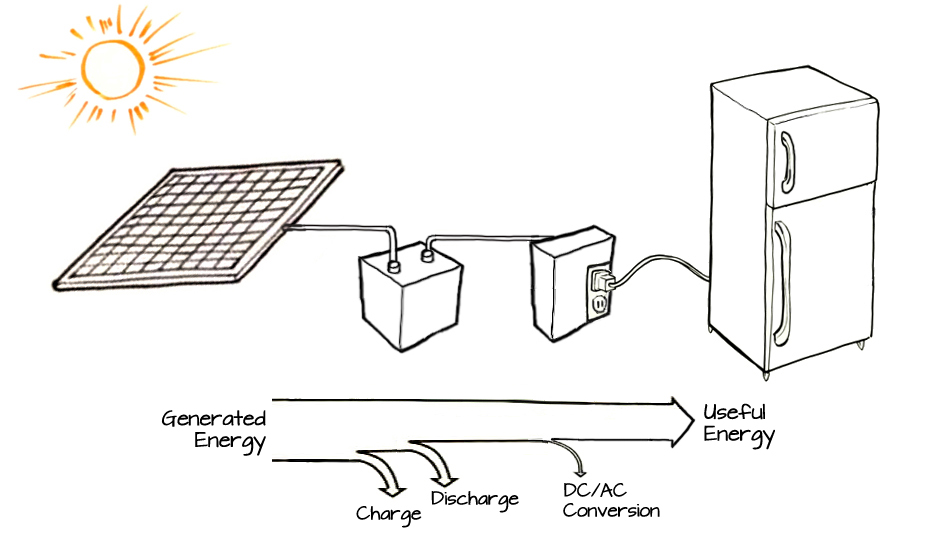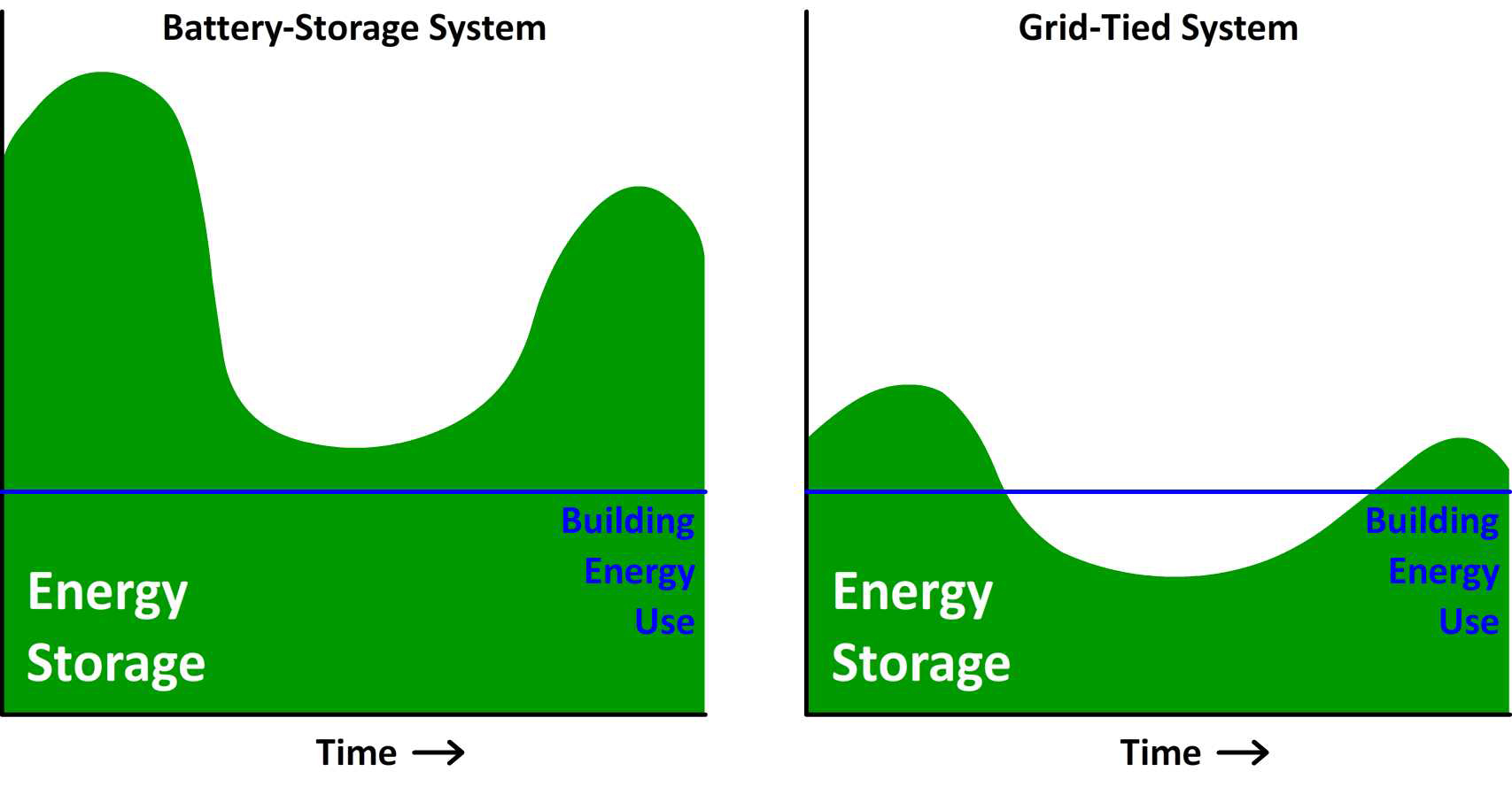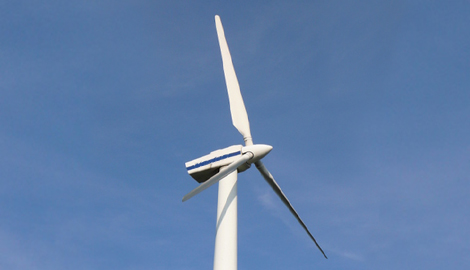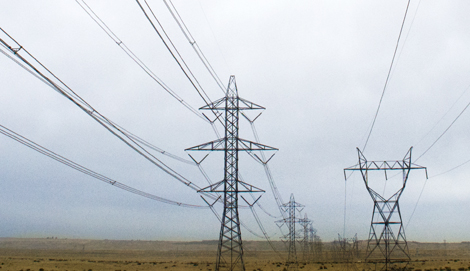You are here
Once you've utilized passive design strategies to the best of your site's ability, you can start to look at clean energy resources, or renewable energy resources, to supply any energy demands your building might have. Here are a few considerations when using clean energy before you dive into the offerings themselves.
![]()
Intermittency and Energy Storage
Obviously, the sun only shines during the daytime, and sometimes cloudy weather obscures the sun. Thus photovoltaics can only be counted on to generate power intermittently, and systems must be sized to generate extra power when the sun is shining, to meet the building's needs when it is dark. Additionally, wind is also intermittent.
The amount of extra power required depends on whether the building is connected to the local electrical grid, or if it is off the grid.
On-Grid vs. Off-Grid
Whenever possible, on-site power generation systems should be tied to the local grid. Off-grid systems require on-site energy storage (usually batteries), which adds environmental impact, and often adds significant cost. In addition, off-grid systems always require much more energy generation than on-grid systems.
This is because the grid can act like a battery that holds an infinite amount of charge, can be recharged and discharged an infinite number of times, never leaks charge, has no depth of discharge, and has nearly 100% charge-discharge efficiency. None of these is true of real batteries.
Real batteries can lose 5 - 30% of their stored energy to charge-discharge losses, and can leak energy over time, so on-site generation systems that store energy in batteries must be oversized to compensate for these losses.
 |
|
Battery charge/discharge efficiency can require significantly more energy generation |
Batteries are also finite. A normal battery array might power a building through three cloudy days, but not a month. However, if those three cloudy days are followed by only one sunny day before another three cloudy days, the building's energy generation systems must generate all of that extra power in one day. The less acceptable it is for the building to occasionally be without power, the more a system must be oversized.
A grid-tied system, on the other hand, can afford to generate less energy than the building needs for several months at a time, as long as the productive times are highly productive.
 |
| Batteries must store more energy than the building uses, requiring excess energy generation. |
As a result, an off-grid system might need to be double the size of a grid-tied system, or even larger, depending on the local climate and building program.


